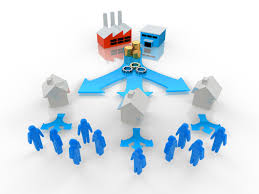Embarking On Sustainable Production
 With the amount of natural resources dwindling at a rate that was not foreseen before, and the anthropogenic practices hasting upon to fill the gap unsuccessfully, the world of having everything at the tip of your fingertips is slowly but surely running into a dead-end of having no resources left at all. This issue is first and foremost understood by those who are involved in the production cycle and are the firsthand witnesses to the amount of resource waste and also the current practices that are only mining the resources without any sense of what will be left for the next hundred years. In order to minimize the waste and the utter disregard for the future many governments are turning into sustainable alternatives for production practices and moving away from the traditional methods. So if you are involved in the production cycle somewhere, here are some items to give consideration to in order to move into the futuristic techniques.
With the amount of natural resources dwindling at a rate that was not foreseen before, and the anthropogenic practices hasting upon to fill the gap unsuccessfully, the world of having everything at the tip of your fingertips is slowly but surely running into a dead-end of having no resources left at all. This issue is first and foremost understood by those who are involved in the production cycle and are the firsthand witnesses to the amount of resource waste and also the current practices that are only mining the resources without any sense of what will be left for the next hundred years. In order to minimize the waste and the utter disregard for the future many governments are turning into sustainable alternatives for production practices and moving away from the traditional methods. So if you are involved in the production cycle somewhere, here are some items to give consideration to in order to move into the futuristic techniques.
Cracking down on the provision cycle
Introduction of sustainable alternatives to the existing supply chain management system is one of the main items of focus purely for the reason that production runs on the provisions. Once this provision train starts on unsustainable practices it is one of the worst habits to cut down on and also the many users involved in this cycle it is hard to involve everyone and monitor progresses of every single person. So, for a producer to ensure that the correct practices are being upheld, he or she will need to entice the resource providers to incorporate the new sustainable practices into their regular schedules.
In fact, garment factory supply chain management system in developing countries are one of the largest pollution and waste producers of the world, and the food production in the northern American continent wastes enough food to feed all the children in the African continent.
Introducing sustainable production
The by-products of factories and manufacturing plants are the largest and sole cause of pollution in the planet. While this issue has been identified for a long while now, the introduction of feasible and efficient sustainable practices are still in the work-in-progress stages with regard to many types of production cycles that run in the planet, see this. While the developed countries are well into producing goods and services with less harmful side effects involved in the process, the developing country has a long way to go in the way of sustainability; which is mainly hampered by the poverty levels that are shackled to these countries.
The exceedingly increasing demand rates has created a vicious cycle scenario where the more cheaper and unsustainable methods are employed and the more expensive yet sustainable practices are discarded to cut back on costs.